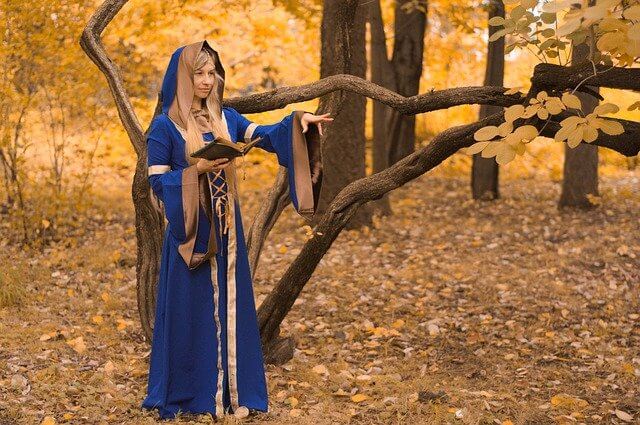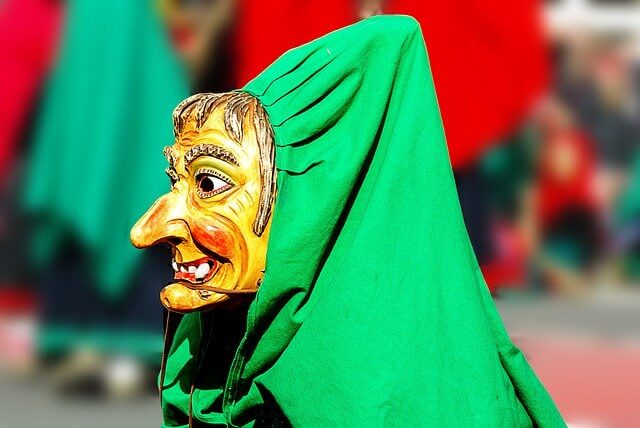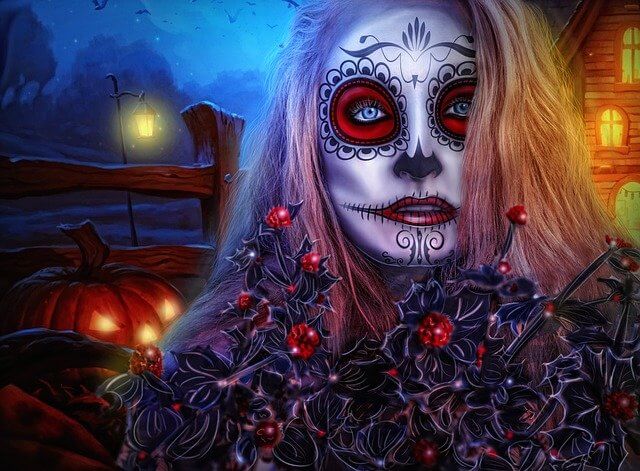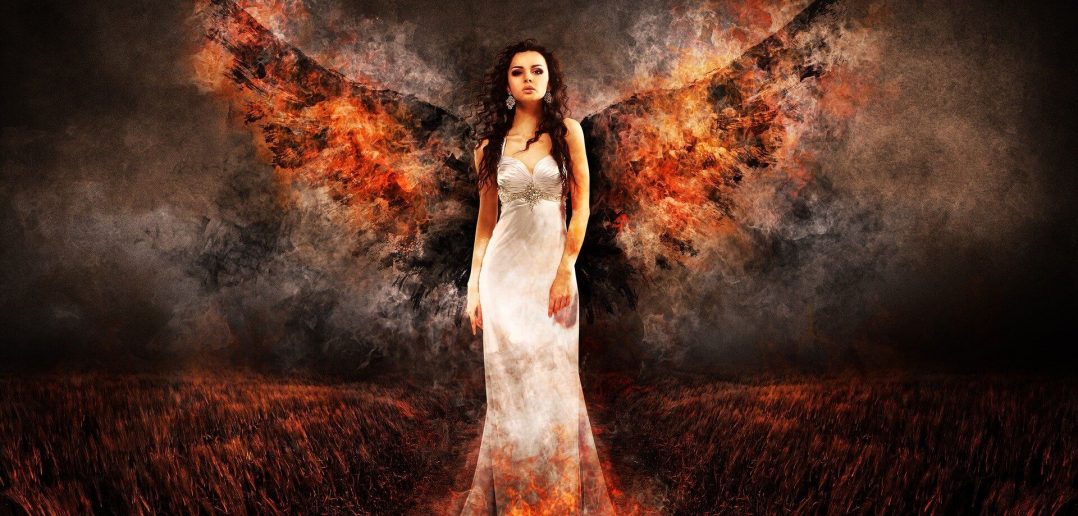What is Witchcraft? Information about the history of Witchcraft. What does Bible say about Witchcraft? Do witches really exist?
Witchcraft; the practice of magic or sorcery. The word witch is derived from the Old English wicce, meaning “a female magician or sorceress,” but although the terms “wizard” and “warlock” are available for male magicians, “witch” and “witchcraft” are generally applied to both sexes and their magical activities. Among many peoples accidents, sickness, death, and other untoward events have been thought to be caused by witches—individuals who had magical power which they used for evil purposes.

Magic could, in primitive belief, be used for good; the practitioners of beneficent magic were often regarded as priests, using their power for the common good; or a distinction was made between white or beneficent magic and black, malevolent magic. The Maori of New Zealand had schools which offered a rigorous training in magic. Most of the graduates used their magic for such purposes as assuring the success of voyages, protecting property, and curing sickness, but some would, for a fee, work magic to produce misfortune or death to an enemy of the client. In the Nilgiri Hills of southern India one of the most primitive tribes, the Kurumba, was noted for its powers of witchcraft, and members of other tribes in the area employed Kurumba witches to wreak vengeance on their enemies.
In Negro Africa, where witchcraft is widespread, the Lovedu (Lobedu) distinguish not only between good magicians and evil magicians or witches, but between day and night witches. The day witches, although they cause sickness and death, are not mysterious, for they use the herbs and drugs known to respectable medical practitioners of the tribe. Although they poison their victims, it is possible for a regular medicine man to identify the poison and supply an antidote. The night witches arc mysterious in their procedure, and so are infinitely more terrifying. They are believed to have powers to ride invisibly through the air.
They can cause disease, barrenness, and unproductive fields, among other calamities, and are particularly feared because no one knows how they operate. If witchcraft is suspected, a witch doctor is called in to divine the cause and set up countermagic. The day witches of the Lovedu operate knowingly. It is less certain that night witches exist except in the minds of the people who fear them.

In Europe witchcraft has a long history. Early Greek literature refers to witchcraft. Best known is the legend of Circe, who had the power to transform men to beasts. The Goetae (goetes), who voiced their incantations with wild shrieks and howls, were feared for their malevolent powers and sold love philters and poisons for money. Hecate, goddess of sorcery and witchcraft, haunted crossroads and graveyards and wandered by night, when dogs warned of her approach by barking.
The English writer Montague Summers has suggested that the goetes and Hecate represent an indigenous religion partially displaced by more fashionable cults imported from the Middle East and elsewhere.
In western Europe also witchcraft probably represents a survival of the pre-Christian religion of the area. The archaeologist Margaret Murray believes that the Satan of the European witch cult is related to the horned god pictured in cave paintings and rock carvings found in late prehistoric sites all the way from Spain to Russia. There is historic evidence that pagan religious rites were little aifected by the Romans and were often practiced in Roman temples in Britain and Gaul.
When Christianity was introduced into western Europe, many pre-Christian rites became associated with Christian ritual. As late as the 17th century it was said in France that “the greater part of the priests are witches.” During the early centuries the church was tolerant of the popular religion, but by the 14th century it was sufficiently established to try to stamp out the pagan cults that flourished beside or even within the church.
While the church was attempting to eradicate popular pre-Christian rites, these rites were taking on a Christian coloration. The church held as dogma the opposition of good and evil. God was good; Satan, according to Dr. Murray’s thesis, became identified with the pagan European horned god. The popular pagan religion seems to have accepted this antithesis and to have developed a ritual which was imitatively contrasted to the Christian faith. Infants were baptized at the quarterly sabbats (witches’ sabbaths) held at Candlemas (February 2), May Day Eve (Wal-purgis Night, April 30), Lammas (August 1), and All Hallow Eve (Halloween, October 31); marriages were solemnized at the sabbats; and the religious rites included the distribution of bread and wine, in imitation of the Eucharist.

The church equated the popular pagan deity with the principle of evil, the Devil, and popular rites with witchcraft. A Biblical exhortation, “Thou shalt not suffer a witch to live” (Exodus 22:18), was held to justify the witch-hunt that flourished for several centuries. The bishop of Coventry, who led a fertility dance in his churchyard in 1303, escaped trial because he was a bishop. In 1323 a lady was tried for worshiping a deity other than God but was let off because of her rank, but in 1431 Joan of Arc was burned at the stake for witchcraft, and in 1484 Pope Innocent VIII issued a bull against witches.
It has been estimated that during the next three centuries 300,000 to 2,000,000 persons were executed as witches.
It is difficult to know how many of the victims were followers of the old pagan religion, how many lost their lives in the general hysteria simply because they were not liked in their communities, or how many genuinely believed themselves to be witches—to have magical powers to do evil. Certainly many innocent persons lost their lives, as in the Salem (Mass.) witch-hunt of 1692, which was begun by children who found diversion in the voodoo tales told by a West Indian slave woman and who, once they had started making accusations of witchcraft, found it easier to continue than to retract.
Among the practicing witches, one should distinguish between the simple women who dealt in herbs and charms to help their fellows as well as, on occasion, to injure them, and the ever-decreasing number of persons who clung to pagan religious rites. A belief in witchcraft persisted long after the witch hunt subsided. The Scottish poet Robert Burns described witches’ sabbaths in his Tam o’ Shanter and Halloween, and the witch-on-broomstick motif of modern Halloween decorations is a reminder of an earlier belief that witches flew through the air on Halloween.
There may have been witches who believed themselves capable of such supernatural acts, for the drug plants they are recorded as using—opium poppy, mandrake, belladonna (deadly nightshade), and Indian hemp—are known to produce hallucinations and vascular excitement. The use of charms to cause illness or death has not completely died out: there is record of a man dying of witchcraft in New York in 1940. This last may seem strange to one living in a scientific world, but it is well established by observers of primitive societies where witchcraft ‘prevails that people can die of witchcraft.
The belief that one is a victim of witchcraft is psychologically as potent as actual magic could be. As for the great witch-hunt which shook Europe for several centuries, it has bequeathed to the English language the term “witch-hunt” in the meaning of “searching out and harassing proponents of an incompatible political philosophy.”
